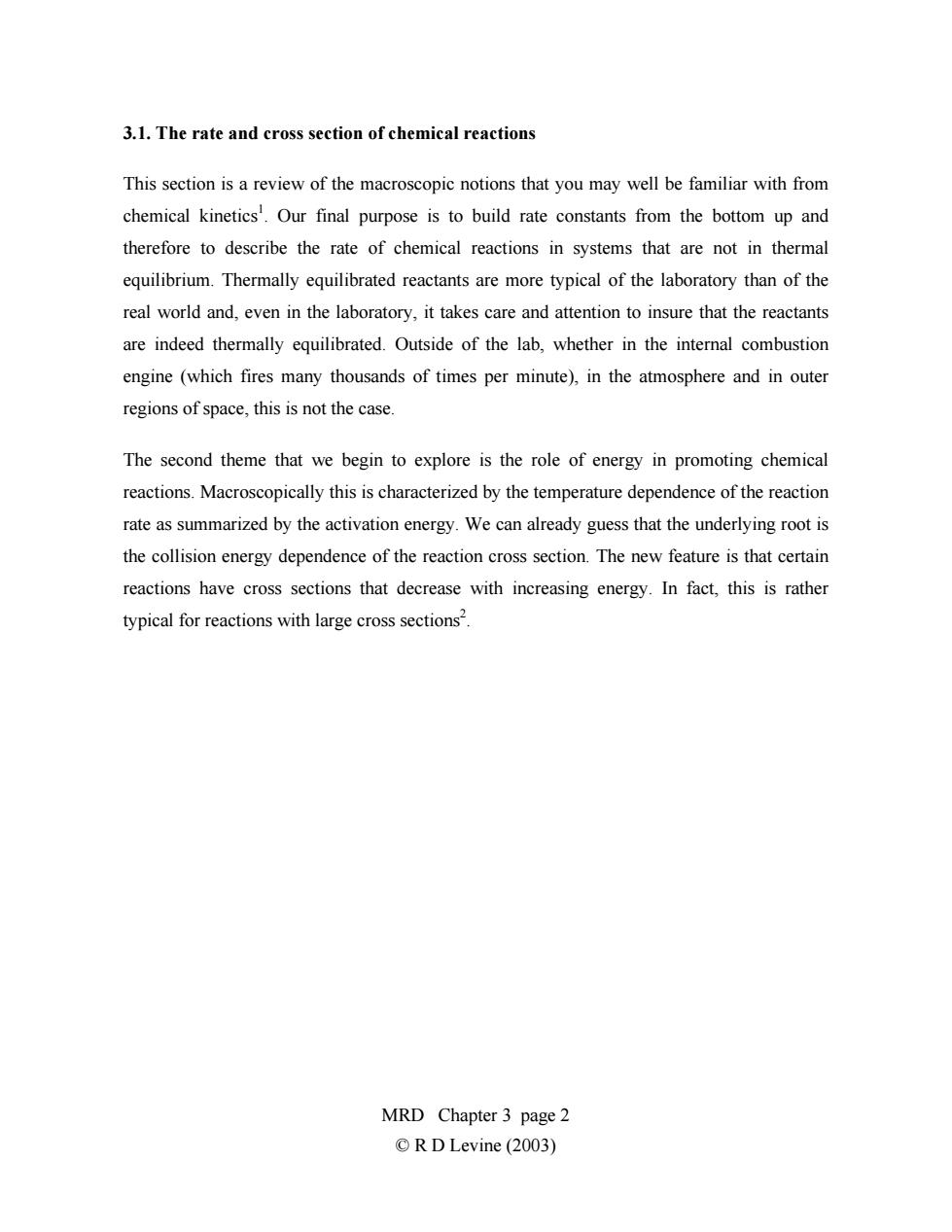正在加载图片...

3.1.The rate and cross section of chemical reactions This section is a review of the macroscopic notions that you may well be familiar with from chemical kinetics'.Our final purpose is to build rate constants from the bottom up and therefore to describe the rate of chemical reactions in systems that are not in thermal equilibrium.Thermally equilibrated reactants are more typical of the laboratory than of the real world and,even in the laboratory,it takes care and attention to insure that the reactants are indeed thermally equilibrated.Outside of the lab,whether in the internal combustion engine (which fires many thousands of times per minute),in the atmosphere and in outer regions of space,this is not the case. The second theme that we begin to explore is the role of energy in promoting chemical reactions.Macroscopically this is characterized by the temperature dependence of the reaction rate as summarized by the activation energy.We can already guess that the underlying root is the collision energy dependence of the reaction cross section.The new feature is that certain reactions have cross sections that decrease with increasing energy.In fact,this is rather typical for reactions with large cross sections2. MRD Chapter 3 page 2 ©RD Levine(2003)3.1. The rate and cross section of chemical reactions This section is a review of the macroscopic notions that you may well be familiar with from chemical kinetics1 . Our final purpose is to build rate constants from the bottom up and therefore to describe the rate of chemical reactions in systems that are not in thermal equilibrium. Thermally equilibrated reactants are more typical of the laboratory than of the real world and, even in the laboratory, it takes care and attention to insure that the reactants are indeed thermally equilibrated. Outside of the lab, whether in the internal combustion engine (which fires many thousands of times per minute), in the atmosphere and in outer regions of space, this is not the case. The second theme that we begin to explore is the role of energy in promoting chemical reactions. Macroscopically this is characterized by the temperature dependence of the reaction rate as summarized by the activation energy. We can already guess that the underlying root is the collision energy dependence of the reaction cross section. The new feature is that certain reactions have cross sections that decrease with increasing energy. In fact, this is rather typical for reactions with large cross sections 2 . MRD Chapter 3 page 2 © R D Levine (2003)